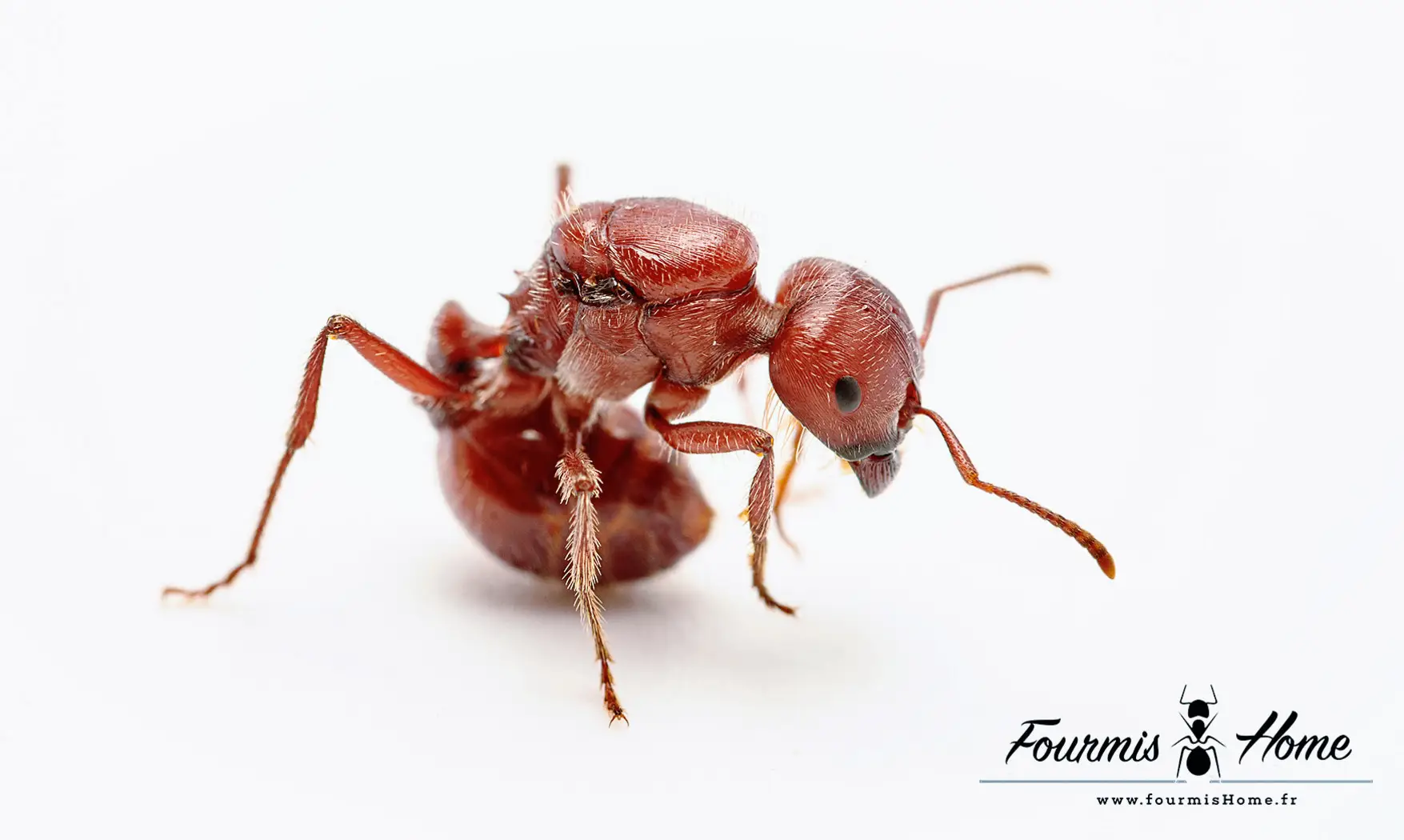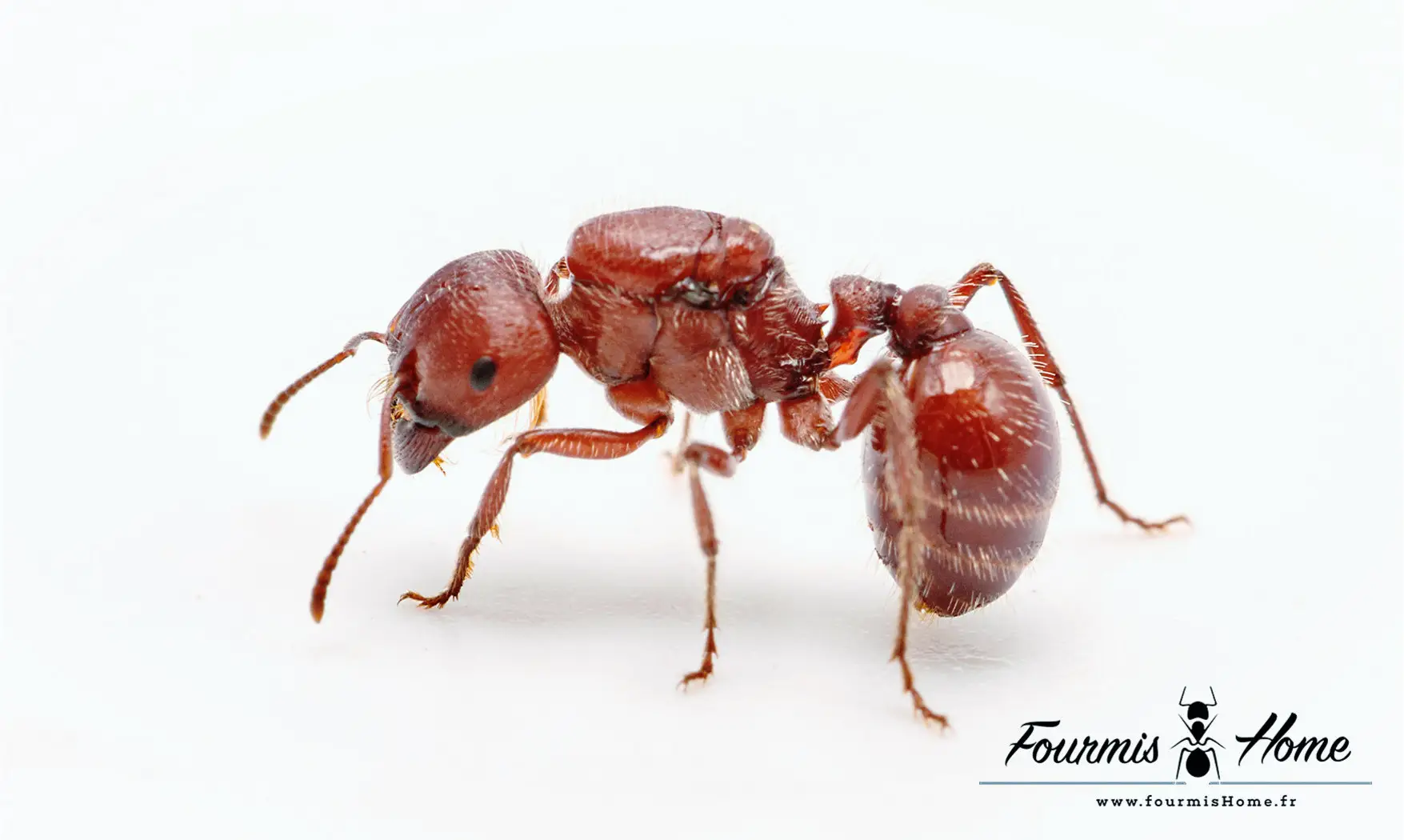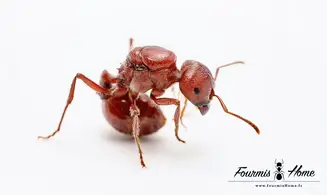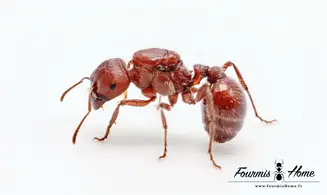



Pogonomyrmex barbatus
Reference : PFOUR-020
69.90€
unAvailable
0 in stock
Latin name: Pogonomyrmex barbatus
Common name: Wild ants
Taxonomy: Subfamily: Myrmicinae
Breeding level: Experienced can bite painfully and in some cases cause allergic reactions so not for children
Distribution: United States, Northern Mexico
House: desert
Colony: monogyne
Queen: Size: 10 - 11mm Color: reddish brown
Worker: Size: 5 - 9mm Color: reddish brown
Soldier: not present
Nutrition: mainly seeds, for example millet, alpine and insects eg flies or mealworms
Humidity of the air: Hunting area: 30 - 50% Nest: 50 - 60%
Temperature: Hunting area: 22 - 28 ° C Nest: 24 - 28 ° C
Hibernation: yes, like the Mediterranean species for 2 to 3 months at a temperature of 15 to 18 ° C (unheated room)
Nesting form in nature: Builds their nest in soil up to 2 m and several dome exit of 10 cm in height.
Preferred nest type: Plaster tube the first year and after stone nest
Nest size: M - L
Substrate for terra: clay sand
Planting in hunting area: similar to desert areas with grass and different cacti
Decoration: Branches, Roots
Description: Desert species from North America and Central America. They store the seeds in granaries up to 2 m deep, they are identical to the Messor of Europe with the possibility of stitching making it a very good footwear. In the wild, they build huge underground nests and tunnels. To grind hard seeds, they have a robust head with strong mandibles.
Swarming: July to August
Foundation: cloistral in a test tube with a little sand
Adult colony size: up to 10,000 workers
Common name: Wild ants
Taxonomy: Subfamily: Myrmicinae
Breeding level: Experienced can bite painfully and in some cases cause allergic reactions so not for children
Distribution: United States, Northern Mexico
House: desert
Colony: monogyne
Queen: Size: 10 - 11mm Color: reddish brown
Worker: Size: 5 - 9mm Color: reddish brown
Soldier: not present
Nutrition: mainly seeds, for example millet, alpine and insects eg flies or mealworms
Humidity of the air: Hunting area: 30 - 50% Nest: 50 - 60%
Temperature: Hunting area: 22 - 28 ° C Nest: 24 - 28 ° C
Hibernation: yes, like the Mediterranean species for 2 to 3 months at a temperature of 15 to 18 ° C (unheated room)
Nesting form in nature: Builds their nest in soil up to 2 m and several dome exit of 10 cm in height.
Preferred nest type: Plaster tube the first year and after stone nest
Nest size: M - L
Substrate for terra: clay sand
Planting in hunting area: similar to desert areas with grass and different cacti
Decoration: Branches, Roots
Description: Desert species from North America and Central America. They store the seeds in granaries up to 2 m deep, they are identical to the Messor of Europe with the possibility of stitching making it a very good footwear. In the wild, they build huge underground nests and tunnels. To grind hard seeds, they have a robust head with strong mandibles.
Swarming: July to August
Foundation: cloistral in a test tube with a little sand
Adult colony size: up to 10,000 workers

